When it comes to eCommerce, social proof is a proven and cost-effective way to engage customers using the data you already have at your fingertips.
But what exactly is social proof? Psychologically speaking it’s the phenomenon where people assume the actions of others reflect correct behavior for a given situation. In eCommerce, it’s the idea that people prefer to imitate the behavior of others when making a purchase decision. In other words, we desire things more when they are popular.
In this post, we’ll look at ways to leverage your products’ popularity to win over customers and boost conversions. Read on to learn what popularity messaging is and 5 ways to implement this social proof tactic in your marketing. We’ve got 8 real-life examples to inspire you, so let’s get started.
What is popularity messaging?
Popularity messaging is when retailers use real-time purchase and browse data to display how many other shoppers have recently viewed, carted or purchased a particular product. This tactic simultaneously increases urgency and makes products seem more desirable. And it’s proven to boost conversions – Buyagift have seen a 13% increase in sales since implementing popularity messaging into their automated discount emails.
5 ways to use popularity messaging
Now let’s take a look at 5 ways to use popularity messaging across your website and email marketing to speed up the purchase process and boost conversions.
1. Product listing page
Product listing pages can be overwhelming. All those options can lead to an onslaught of choice paralysis, causing your shopper to abandon before reaching the end of the page. Help them narrow down their options and highlight products that have resonated with other shoppers with popularity messaging.
In these examples, Matalan and Aldi use urgency-boosting language to showcase their popular products and encourage shoppers to click through to those product pages.
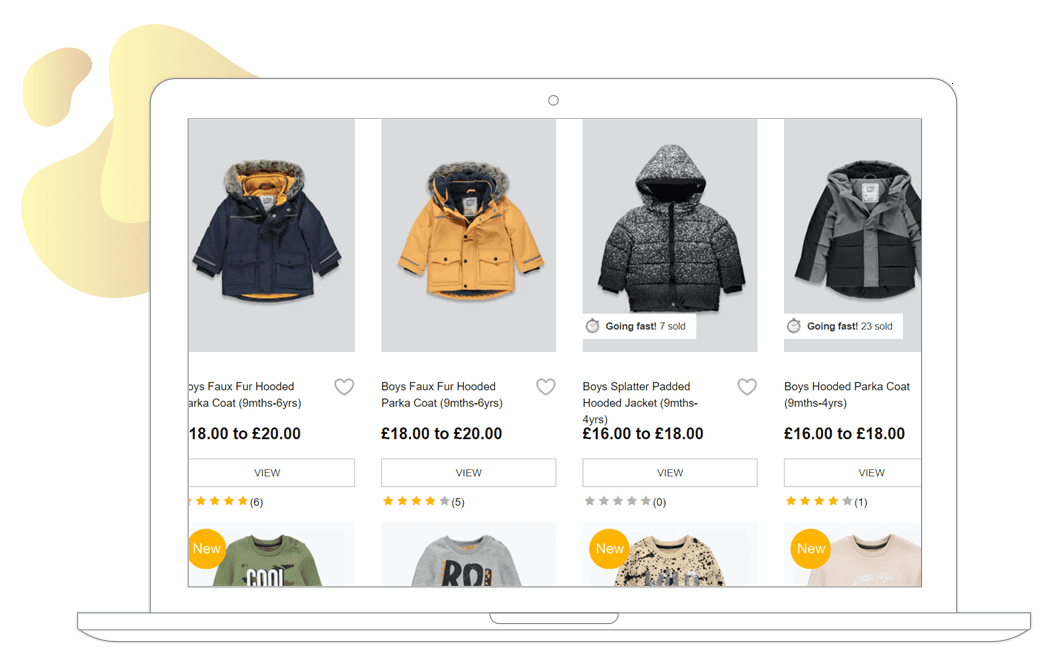
Source: matalan.co.uk
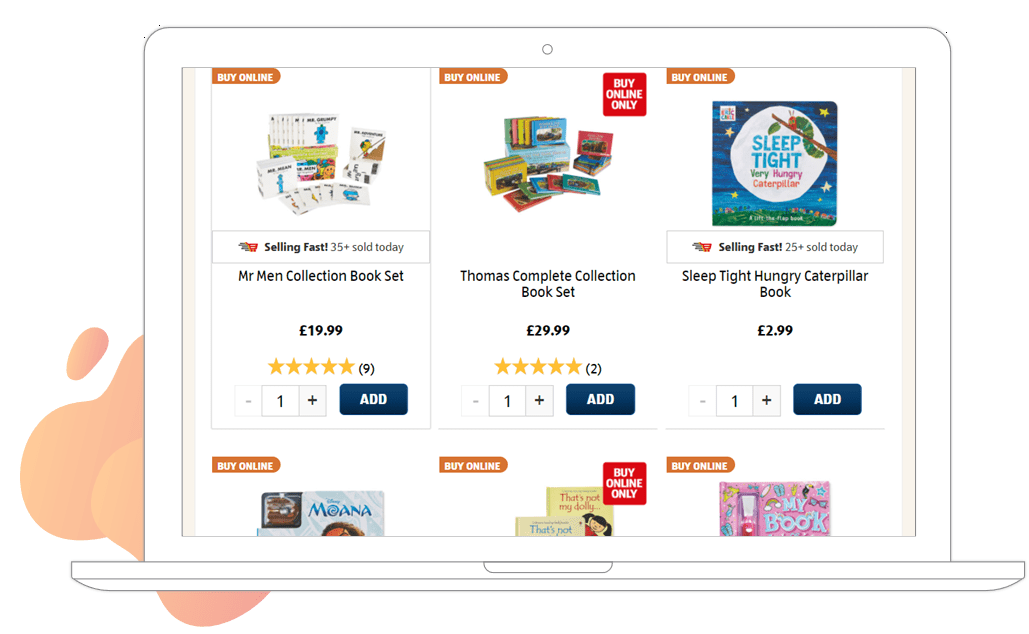
Source: aldi.co.uk
2. Product detail page
Once a shopper makes it onto your product detail page, you need to pull out all the stops to keep them interested enough to add the product to their shopping cart.
Victorian Plumbing doubles down on their popularity messaging, displaying how many other shoppers are looking at the product as well as how many have purchased it recently.
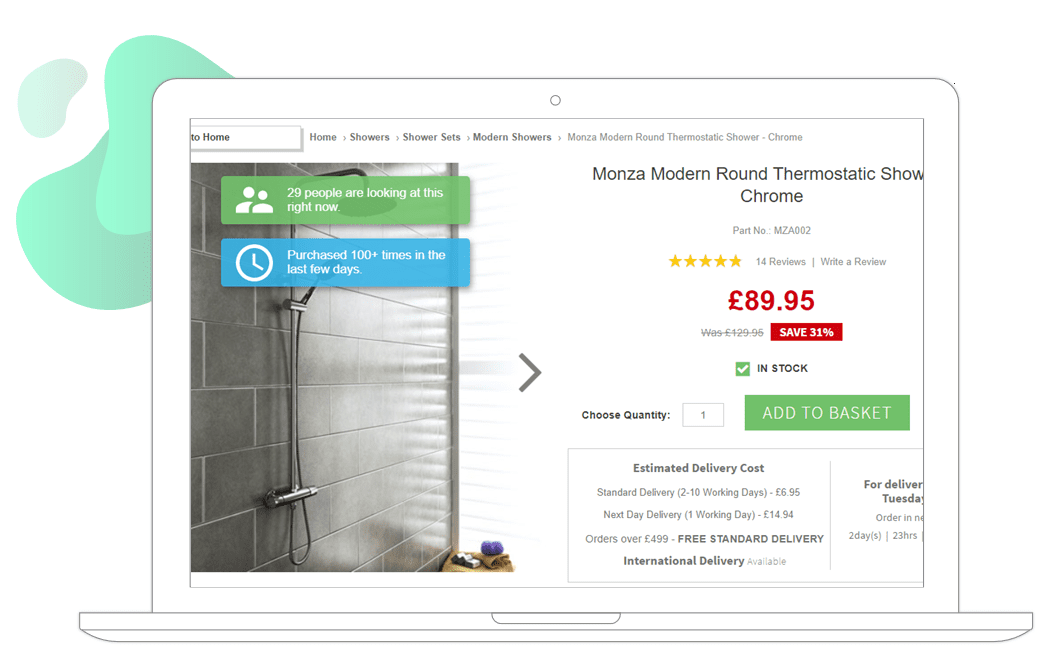
Source: victorianplumbing.co.uk
Cooksongold prominently displays how many other shoppers have purchased the product recently, signalling to shoppers that it’s in high demand.
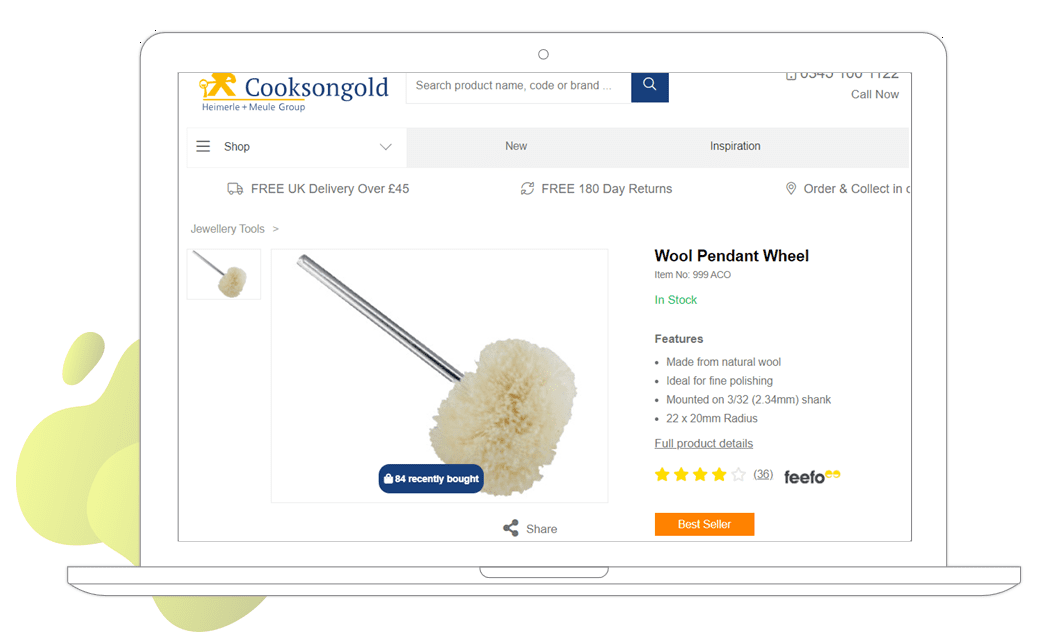
Source: cooksongold.com
3. Cart page
The shopper has made it all the way to the cart page. Great! But here’s the catch. Our research shows that almost 60% of carts are abandoned. So before you sit back and wait for that conversion to roll in, consider adding popularity messaging to your cart page to give shoppers the extra boost of confidence they need to complete their purchase.
As well as boosting confidence with popularity messaging, John Lewis ramps up the urgency by showing shoppers that there are only three of the carted product left in stock. This kind of scarcity messaging combined with popularity messaging is powerful, as it shows shoppers that they need to act quickly if they want to bag their desired purchase.
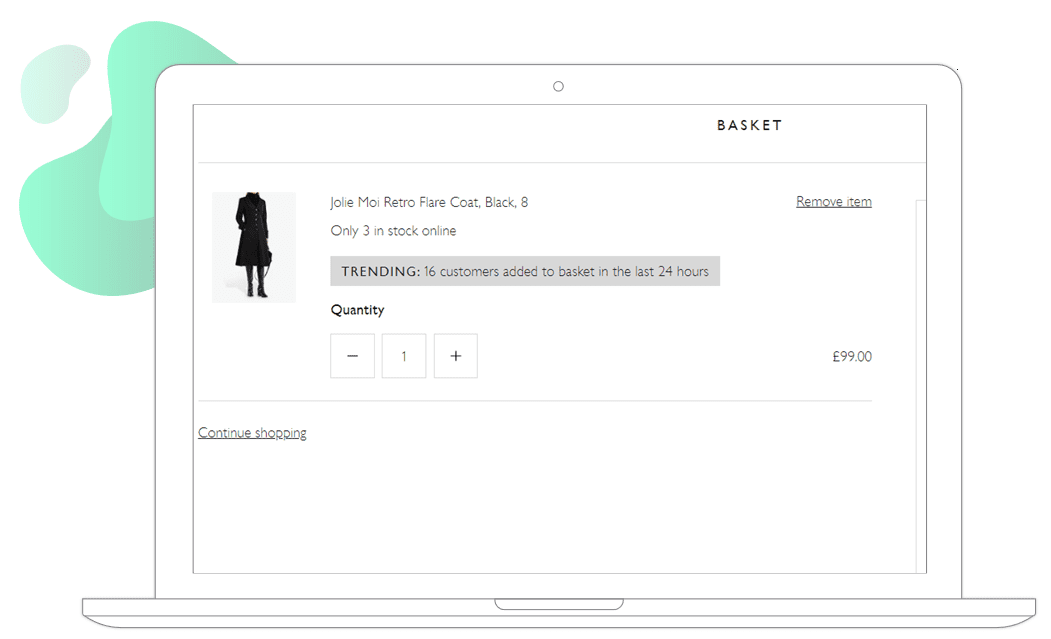
Source: johnlewis.com
JD Sports utilizes similar scarcity messaging on their cart page.
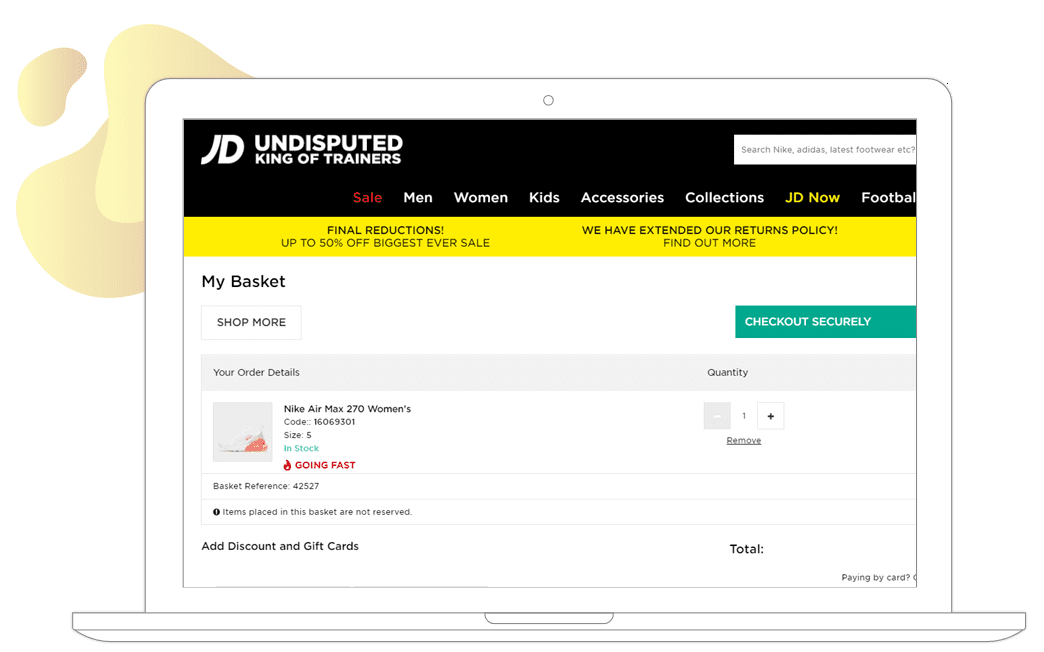
Source: jdsports.co.uk
4. Email newsletter
Popularity messaging is more than just a tool for online stores. Use this social proof tactic in emails containing product details to show real-time information about how that product is being engaged with on the website. This is a great way to spark interest and increase click throughs, and can be combined with personalized product recommendations for maximum impact.
Animed adds popularity messaging to their email newsletters to boost recipients’ interest in their personalized product recommendations.
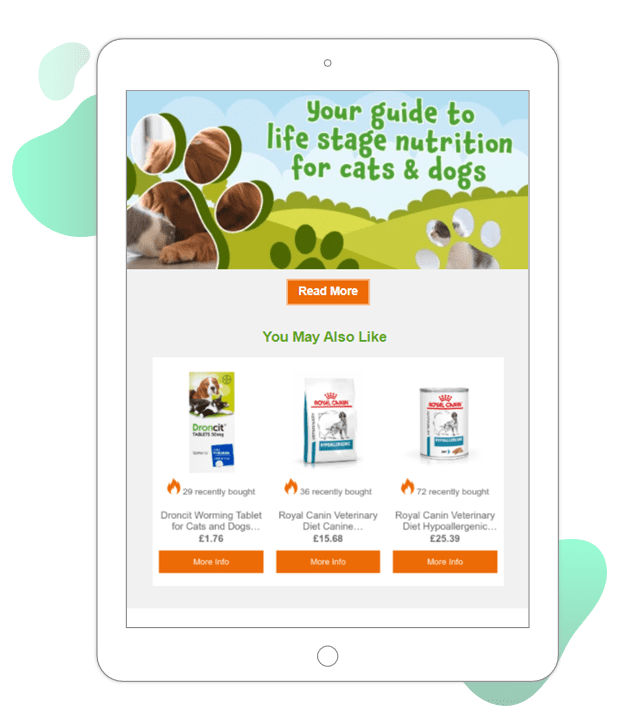
Source: Animed Direct email
5. Triggered emails
Popularity messaging can be a useful addition to triggered emails – such as price drop alerts and abandonment emails – where social proof could be the final push shoppers need towards purchasing a product they’re already interested in.
Cottages.com includes popularity messaging in their cart abandonment emails, displaying how many other people have viewed the carted property recently. This is an effective way to drive urgency for finite offerings such as vacation rental homes. Customers know they need to act fast to avoid losing out on their dream vacation.
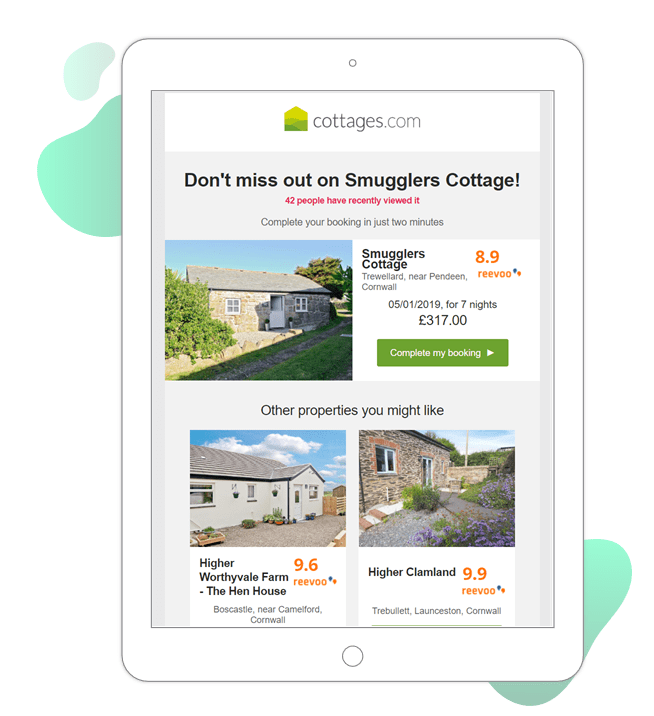
Source: Cottages.com email
Getting started with social proof
Displaying popularity messaging is a tried and tested social proof tactic that engages customers without the need for discounts or ambitious creatives. This makes it a cost-effective and efficient tool to increase conversions across web and email.
What’s more, today’s eCommerce solutions collect purchase and viewing data in real time, and allow marketers to choose how and when this is displayed. There’s never been a better time to add social proof to your marketing tool-kit.
Download our eBook to discover 14 ways to get started with social proof.
Disclaimer
This blog post is for informational purposes only. Fresh Relevance is not claiming to provide its services to the companies and brand owners referred to in the blog post.






